
|   |

|   |
A 'Houseful’ diversion, nonetheless! - Jyothi Raghuram e-mail: jyothi.r.ram@gmail.com Pics: Srivatsa April 28, 2013 It was not a program meant to be reviewed because it was a commemorative event that was a mix of Kannada film songs, glimpses of classical dance adapted to film music, felicitations and interspersed with a commentary on Kannada cinema. The potpourri was in observance of the birth anniversary Raj Kumar, and in memory of playback singer P B Srinivas, who passed away recently. The event evoked thoughts on the attraction of cinema and the struggle of dancers to garner a respectable audience. Is there something to learn from what is already known? Got up by International Arts and Cultural Foundation floated by performing arts photographer Srivatsa Shandilya, at Seva Sadan, Bangalore, on April 24, “House Full” was to be as much a dance event as it was about Kannada film songs. Common sense pointed out that dance alone would not be able to sustain the show, given that such songs barely last three minutes at most. Sugganahalli Shadakshari’s lengthy fillers turned out to be the bulwark. As compere, he gave many an interesting cinematic detail referenced to the songs to be danced. And the dancers, to their credit, did not go “filmi” in their costuming or dancing, which was a saving grace. There was not much they could do with a film song, removed as it were from the context of the film. The swinging leg movements, in an imitation of the karanas that the female dancers resorted to, showed in stark light the levity of the evening’s concept. Satyanarayana Raju, Anuradha Vikranth, Shama Krishna, Nayana Somayaji and Shivaranjani Harish were the dancers of the day. 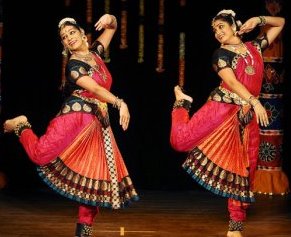 Anuradha Vikranth & Shama Krishna 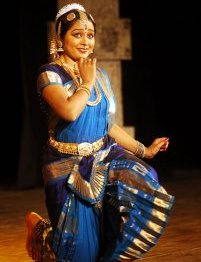 Shivaranjani Harish 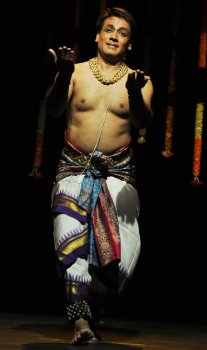 Satyanarayana Raju 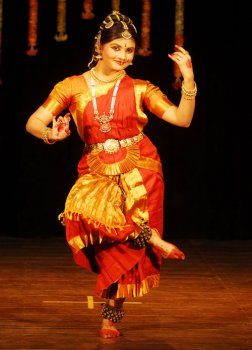 Nayana Somayaji They chose old, popular songs. Satyanarayana opened the show with Kanakadasa’s “Baagilanu Theredu,” a slow and dignified number, full of devotion. He was the only dancer to have chosen a laid-back music rhythm, the rest bringing in nritta, for whatever it was worth. “Cheluvaanta Chennigane” from ‘Amarashilpi Jakkannachari’ was Shama’s first dance, the brisk pace suiting the bright dancer. Anuradha’s “Gaana Natya” from ‘Kalavathi’ left no impression. Nayana’s “Madhura Mohana” and Shivaranjani’s “Laalisidhalu” were also attempts at keeping a classical approach. For a purported dance event, it was music that turned out to make it worthwhile. Deepti Srinath, a classical vocalist and dance accompanist and Samanvitha Sharma, a Kathak dancer and singer, rendered a film song each, which resonated in one’s ears even after the show. Deepti chose the particularly difficult “Teredidhe Mane” from the film ‘Hosa Beluku.’ This sublime poem of Kuvempu is a duet of S Janaki and Vani Jayaram in the film, both of whom vie for high-pitched honours. Deepti rendered this singly, assimilating the differing pitches harmoniously. Samanvitha chose the all-time favourite “Gaganavu Yello” from Gejje Pooje, again a high-pitched, differential octaves number. There was no falsetto in her rendition, her sweet voice buoyant and zestful  Deepti Srinath 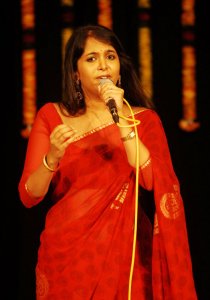 Samanvitha Sharma “House Full” could be appreciated only in the context of the occasion, and as a one-time event. Srivatsa says his next event will be for Kannada Rajyotsava, “re-engineering” Kannada music-dance, to showcase Karnataka. The audience turnout, especially with a large share of children and youngsters, was very encouraging. Alas, it was the tag of “cinema” that was the clincher. There is no dearth of dance aspirants; they can form a good chunk of viewers at a dance recital. And why don’t parents prompt their children to attend traditional arts events? Jyothi Raghuram is a journalist with over two decades experience in both the print and electronic media, having worked with news organizations such as PTI, The Hindu and Indian Express. Her specialized writings on the performing and visual arts have been considered as benchmarks for their comprehensive and in-depth dealing of the subjects. |